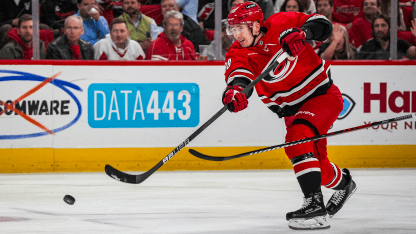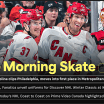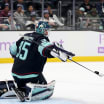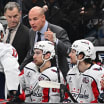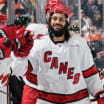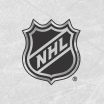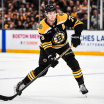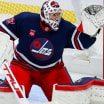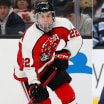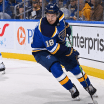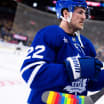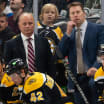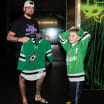Here is the Nov. 20 edition of the weekly NHL.com mailbag, where we answer your questions asked on X and Bluesky. Send your questions to @drosennhl and @NHLdotcom on X, or @drosennhl.bsky.social on Bluesky, and tag them with #OvertheBoards.
How likely is it that Martin Necas will continue his torrid pace? And as a flipside of that question, how long can the Hurricanes keep up their success with both Sebastian Aho and Andrei Svechnikov struggling to be effective in 5-on-5? -- @jackmanley.bsky.social
Necas has 30 points (11 goals, 19 assists) in 18 games, including 27 points (10 goals, 17 assists) in a 13-game point streak that was snapped on Wednesday against the Philadelphia Flyers. That means over those 13 games, Necas was on a 170-point pace for a full 82-game season. For this season, he's on a 136-point pace. I don't think I'm breaking news here when I say there will be a dip at some point. He's red-hot right now, which is huge for the Hurricanes (14-4-0), because, as you mentioned in your question, Aho and Svechnikov are not lighting it up at even strength.
Aho has 11 even-strength points (four goals, seven assists) after getting a goal and an assist in the win against the Flyers, and Svechnikov haseight (two goals, six assists). They have each played in all 18 games. Necas (18 even-strength points), Eric Robinson (12), Jordan Martinook (12), Jesperi Kotkaniemi (11) and Jack Roslovic (11, including 10 goals) have matched the even strength production of Aho and exceeded that of Svechnikov, who are first-line forwards. But I wouldn't be concerned. Aho, for example, spends 48.7 percent of his even strength shifts in the offensive zone as opposed to 32.7 percent in the defensive zone, according to NHL Edge stats. That's a significant discrepancy and shows that he has the puck a lot. He has 13 high-danger shots on goal, but one goal. He's getting chances. He's just not finishing. If he wasn't getting chances that would be a problem. Svechnikov has four goals on 28 shots in the high-danger area. That's below the league average. He too is generating chances with his 47.2 percent in the offensive zone.
Necas' hot streak is helping to push the Hurricanes offense at a time when Aho and Svechnikov are a bit snakebit and forward Seth Jarvis is out with an injury. Necas might cool eventually, but the statistics show that Aho and Svechnikov could start picking up their even-strength production soon.
